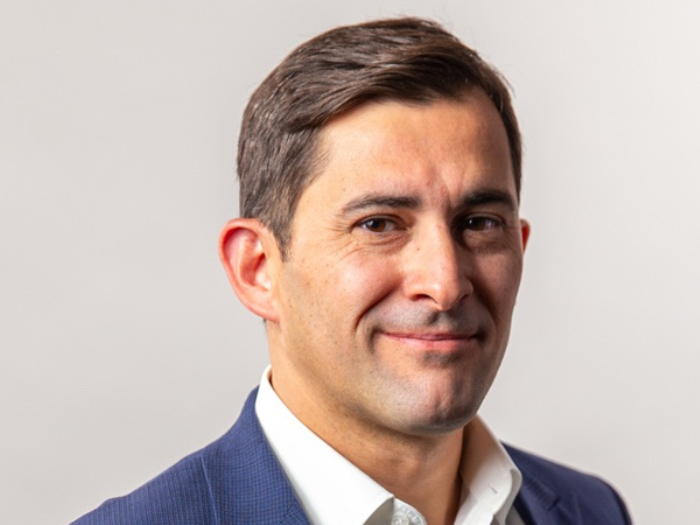Care for the Whole Person: Concentra’s Giovanni Gallara on How to Keep Pace with the Wellness Needs of Today’s Workforce
When you think of anticipatory prevention, the first thing that comes to mind may be reducing the risk of illness or injury through tried-and-true interventions like immunization and safety policies.
As you dig deeper, you’ll see that prevention versus reaction is a strategy used virtually everywhere in today’s world — and not just for health and safety reasons.
Retailers, for their part, continue to identify new technologies — like Bluetooth-activated chips implanted into merchandise — to combat the nearly $100 billion in annual losses faced due to “shrink,” which includes shoplifting and gift card theft.
Still, wellness remains among the most visible focus areas when it comes to innovations in prevention by design.
Consider the sweeping changes to protective equipment, evaluation protocols and gameplay rules made in recent years by the NFL with the goals of reducing concussion rates and preventing suspected chronic sequelae associated with recurrent concussions.
But professional athletes aren’t the only group at risk for work-related injuries, nor are all injuries acute or physiologic in nature.
Warehouse employees, shift workers and even white-collar professionals face occupational health risks each day, many of which are avoidable — or, at the very least, controllable — with the right approach.
There is a long history in occupational health care of identifying workplace hazards and employing hazard control measures like ergonomic training and personal protective equipment (PPE) to mitigate the risk of illness and injury.
This proactive approach has undeniably played a role in the overall decline in workplace injuries reported over the past two decades.
Why, then, does employer medical spend continue to rise? Some say that more expensive claims (many of which are associated with the ailments of an aging workforce or medical comorbidities) are the culprit.
So what can we do to reverse the trend?
Wellness Plans and Whole Health
The answer may quite simply be doubling down on our already well-established foundation of proactive prevention — while adopting additional strategies that take into consideration the employee’s “whole health.”
According to the Centers for Disease Control and Prevention (CDC), preventable chronic conditions — not workplace injuries — shoulder much of the blame for the ongoing rise in claims cost.
It’s estimated that upward of $36 billion is lost by employers each year associated with missed time related to five chronic (and largely preventable) conditions or factors: hypertension, diabetes, obesity, sedentary lifestyle and smoking.
Four out of the top 10 most costly health conditions for employers are related to heart disease.
Knowing this, employers should tailor their employee wellness plans to emphasize things like balanced nutrition and guided exercise programs for strength, mobility and cardiovascular health.
Nutritional counseling can give employees the tools and confidence to make healthier food choices and to establish sustainable eating habits that benefit their long-term health and ultimately boost their capability and productivity at work.
And guided fitness programs or employer-sponsored gym memberships can greatly strengthen the employee’s cardiovascular and musculoskeletal fitness.
This combination can make a tremendous impact on the behavior-impacted diseases often responsible for hefty claims costs and time away from work.
Beyond the Physical
Work-related stress is considered by many, including the CDC, to be more serious and potentially more costly than physiologic risk factors like obesity and lack of physical activity.
With this in mind, adding features and services that address employees’ psychosocial needs to your existing illness and injury prevention strategies can be a game changer.
These can be as simple as incorporating additional breaks into the workday schedule, creating a calming environment in break areas, offering employee assistance programs and driving engagement with those programs.
Additionally, cardiovascular and musculoskeletal exercises have been shown to have a positive impact on stress levels, strengthening the case for developing a dedicated nutrition and fitness counseling program.
Embracing the Digital Age
Finally, consider technology.
While you may already be using workplace wearables to monitor environmental or ergonomic exposure levels in hazardous environments, there may be an opportunity to further safeguard your employees’ health and wellness through condition-specific technologies like continuous glucose monitors (CGMs).
For diabetic employees, this easy-to-use device collects and reports blood glucose levels at frequent intervals throughout the day — without the need for a finger stick — and alerts the employee to dangerously low or elevated readings.
Innovative technologies like these (and the data they provide) not only empower employees and their clinicians to better manage underlying conditions and improve overall health, but they also help to reduce time away from work and potentially decrease medical spend associated with disease-related complications that may develop if a condition is not properly monitored and managed over time.
Healthy employees are more productive at work, less likely to sustain an injury and often have extended tenures with their employer.
Although not all occupational illnesses and injuries can be avoided, many — including chronic diseases that can be both debilitating and costly — can be prevented by taking a more proactive role in preventing illness and injury and supporting your employees’ health, wellness and overall wellbeing. &










